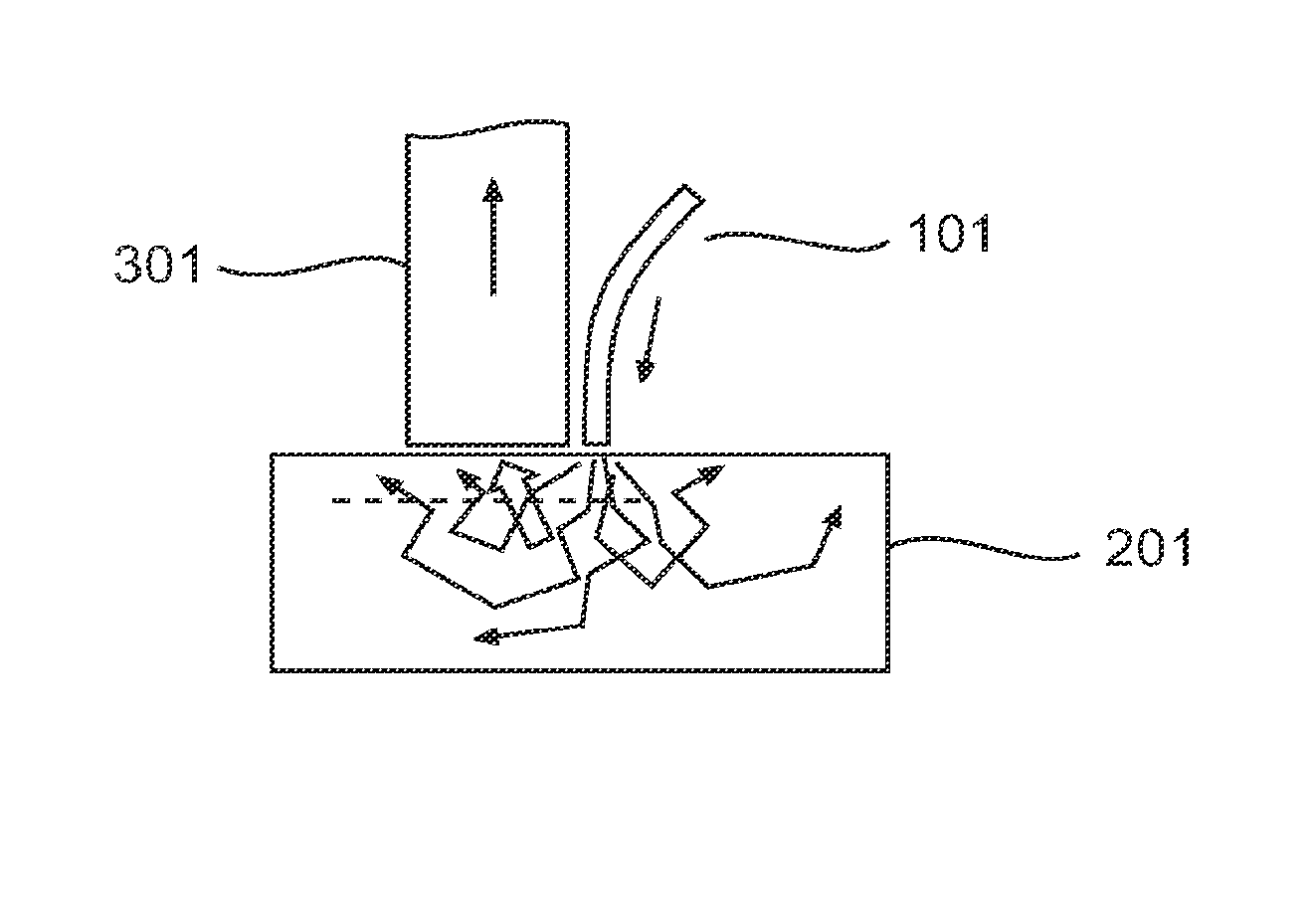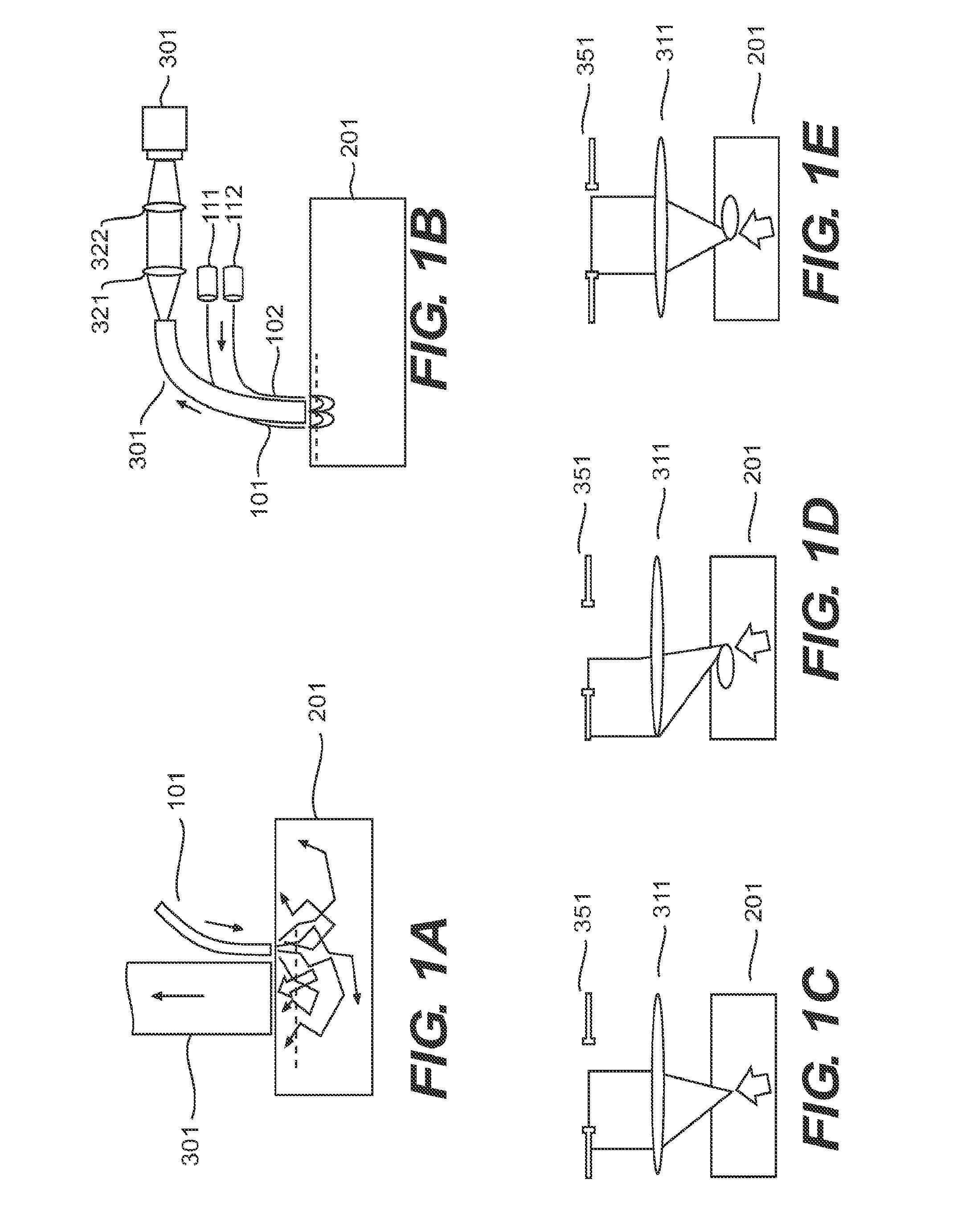Phase Contrast Microscopy With Oblique Back-Illumination
a contrast microscopy and phase contrast technology, applied in the field of tissue pathology assessment, can solve the problems of inability to fully represent tissue biopsies, requiring hours or days to provide, and requiring hours or days to provide, and achieve the effect of in-vivo endomicroscopy applications
- Summary
- Abstract
- Description
- Claims
- Application Information
AI Technical Summary
Benefits of technology
Problems solved by technology
Method used
Image
Examples
example 1
Monte Carlo Analysis of OBM
[0150]As described herein, OBM uses an off axis light source. Illumination light that is multiply scattered in the object is re-directed toward the sample surface and is detected. In this manner, the object plane (defined as the plane that is in focus with respect to the detection optics), is back-illuminated. Because the illumination source is off-axis, the back-illumination flux at the object plane is directed, on average, not quite vertically but with a slight tilt away from the illumination source. That is, the back-illumination is oblique. The illumination source is mimicked by an effective virtual source a distance l*s directly below it (l*s being the transport scattering length of the medium) (FIG. 2). The overlap of the illumination and detection spread functions of the illuminating and detected light is referred to as a “photon banana”. Understanding the distribution of photons in this system will help characterize the geometrical constraints of O...
example 2
OBM Images of Onion Skin
[0155]To demonstrate the resolution and image quality of the OBM technique, images of onion skin were acquired with a flexible endomicroscope configuration. (FIG. 3.) The endomicroscope setup is based on the use of a flexible fiber-bundle probe containing 30,000 fibers. One probe variant provides a 600 μm field-of-view with 6.5 μm resolution. Another probe variant provides a 240 μm field of view with 2.5 μm resolution. The outer diameter of both probes is 2.8 mm. Imaging depth is 70 μm. Illumination is provided by LEDs, and there are no moving parts. The frame rate of the system is 17 Hz.
[0156]Panels (a) and (b) of FIG. 3 are raw images acquired with left and right illumination. Panel (c) is an absorption image (a+b). Panel (d) is a phase gradient image (a- b). Note that panel (d) contains negative values, meaning its zero level is gray. Note that the difference and sum images are very different despite having been obtained simultaneously with the same raw da...
example 3
Images of rodent Colon
[0157]To further demonstrate the resolution and image quality of the OBM technique, as well as to demonstrate its clinical relevance, images of the exposed surface of an excised and fixed rat colon were obtained using the endomicroscope setup described in Example 2. FIGS. 9a and 9b were obtained with left and right illumination, respectively, after core removal (raw core artifacts shown in insets). It is difficult to make out structure without core removal. FIGS. 9c and 9d are the resulting sum (absorption) and difference (phase gradient) images. Both images highlight manifestly different information. In particular, colonic crypts are clearly apparent.
PUM
 Login to View More
Login to View More Abstract
Description
Claims
Application Information
 Login to View More
Login to View More - R&D
- Intellectual Property
- Life Sciences
- Materials
- Tech Scout
- Unparalleled Data Quality
- Higher Quality Content
- 60% Fewer Hallucinations
Browse by: Latest US Patents, China's latest patents, Technical Efficacy Thesaurus, Application Domain, Technology Topic, Popular Technical Reports.
© 2025 PatSnap. All rights reserved.Legal|Privacy policy|Modern Slavery Act Transparency Statement|Sitemap|About US| Contact US: help@patsnap.com



